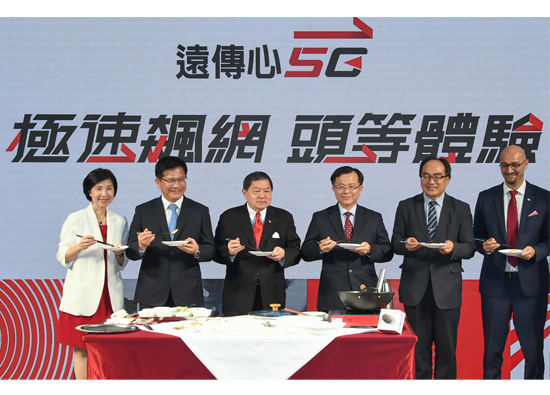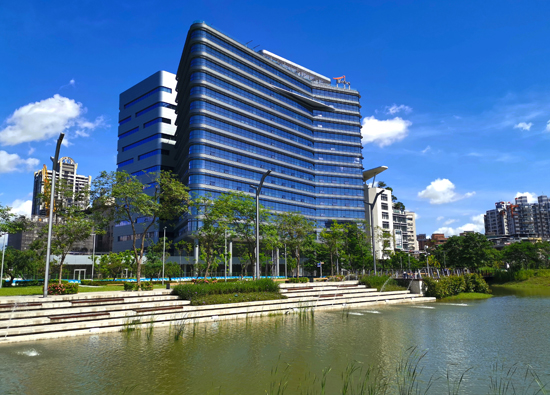09.2020 Cover Story
Intelligent technology leads the way and changes the future medical treatment
Far Eastern Magazine / Editorial Room
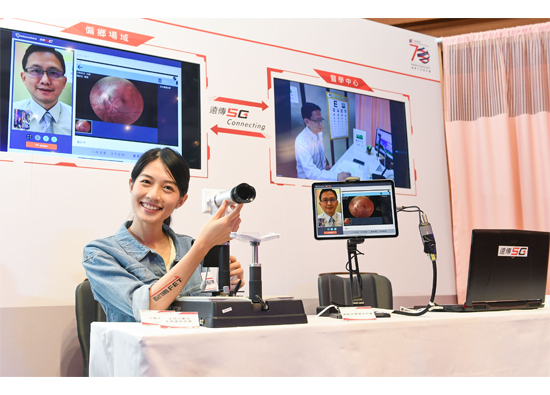
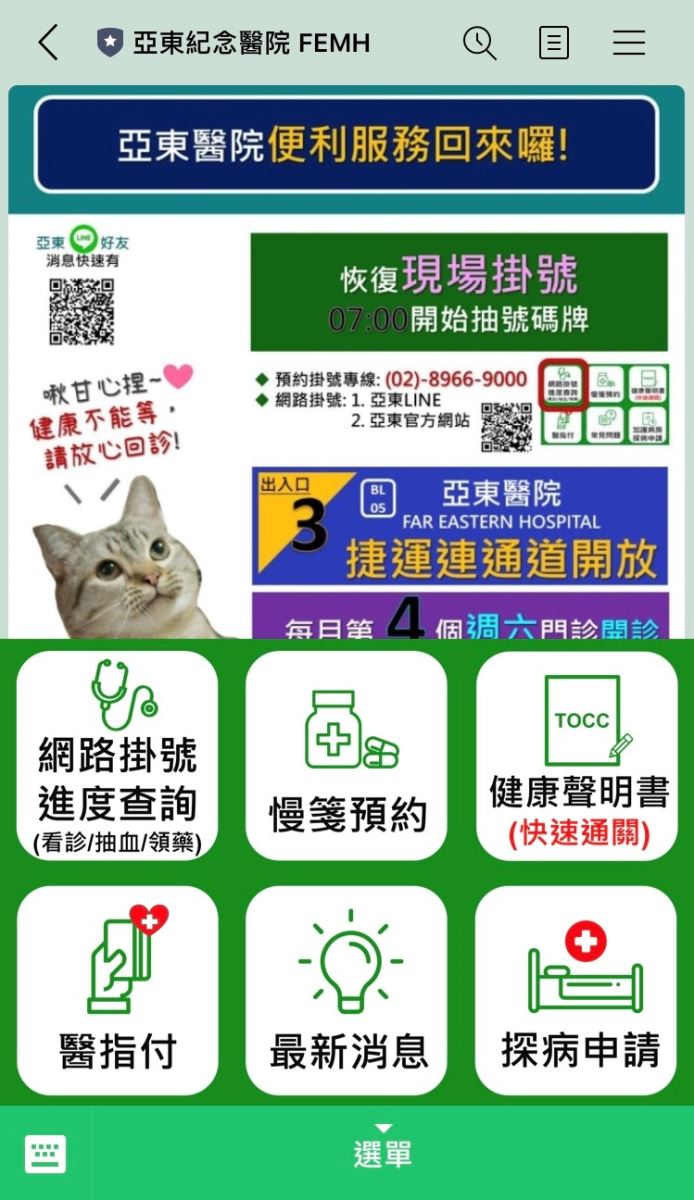
The novel coronavirus pneumonia in the world has made digital transformation a compulsory course for all walks of life, and has accelerated the pace of intelligent medical development. This "cover story" will introduce how Far Eastern Memorial Hospital can use the power of technology to effectively allocate medical resources, enlarge clinical and operational efficiency to provide comprehensive medical care for the public.
Science and technology support hospital epidemic prevention
This year, affected by the novel coronavirus pneumonia, not only the performance of catering, tourism, and department stores fell down, the medical institutions at the frontline of epidemic prevention became the places that people were afraid of. In the past, the clinic was always crowded with people, but it was empty overnight. It was full of tense atmosphere. The Far Eastern Memorial Hospital, located in the city with the second highest number of confirmed cases in Taiwan, was naturally in a very tight situation. All personnel entering the hospital must have the health insurance card and ID card read to implement the real-name system, and the computers at the entrance of the hospital, the outpatient, emergency, inpatient, inspection, and other systems were connected with Health Care Bureau, so as to inquire and prompt whether the personnel has entered or left the high-risk area at any time. When people are admitted to hospital, they also need to fill in a health declaration (TOCC), detailing their travel history, occupation, contact history, and status of mass gathering.
Complicated procedures inevitably affected the efficiency of people's medical treatment. In order to speed up the process and obtain the contact history of patients in advance, the hospital launched the online version of the TOCC, which provides seven languages to facilitate people to fill in the assessment form at home and obtain QR code. After arriving at the hospital, with the access control scanning device, they can go through the fast track lane. Through this system, the hospital can judge whether the personnel can enter the hospital area or need to go directly to the emergency department in advance to reduce the contact risk of patients in the hospital.
In addition, Far Eastern Memorial Hospital has also further linked the API with the official account of Line, expanded its functions and upgraded to "LINE BOT". People can input the keyword, "LINE BOT" will automatically respond to messages. For example, when people send "outpatient service", they will receive information such as outpatient form and medical services suspend; if "registration" is sent, they will receive the link of online registration and telephone registration; in addition, the public can also click " drug collection with receipt", or inquire about the progress of outpatient service, blood sampling and drug collection, so as to greatly reduce the waiting time in gatherings, and then with the online credit card payment of "medical guide" app, the medical treatment process can not only speed up, unnecessary contact will also be reduced, which ensured the safety of patients and employees.
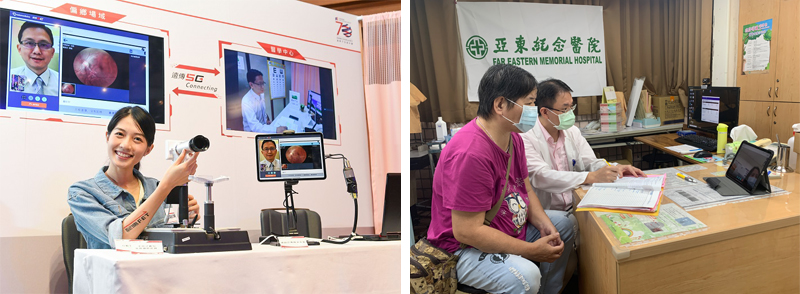
Platform supports the remote medical treatment
In addition to optimizing people's experience of going to hospital through intelligent application, the accessibility of people in remote areas has always been the focus of Far Eastern Memorial Hospital's attention. Over the years, with the support of relevant programs launched by the government and the medical field, the itinerant medical and emergency medical services in remote areas have been improved. However, there is still a shortage of medical resources for various kinds of subacute and chronic medical services. After all, due to the small population and low density in the rural areas, it is difficult for all kinds of specialists to stay in the clinic. If the people have further needs for medication or specialist, it still takes them a lot of time and energy to go to the hospital for medical treatment.
In order to solve this problem, Far Eastern Memorial Hospital has cooperated with FET to develop the "health +" remote measurement platform system since 2015. The blood pressure and blood glucose results measured by people at home can be directly linked to the medical records, which is of great help to the continuity of disease management and health awareness of patients.
However, before the maturity of network environment and system, only equipment or platform can be provided in remote medical services, others for example, the administrative procedures and medical records of hospitals used paper to communicate, resulting in pictures being pictures and data being data. No matter it is for information exchange or communication, it would take a lot of effort and time to connect the bilateral information systems of hospitals.
Since 2019, Far Eastern Memorial Hospital has participated in the 5G remote medical services plan of FET, accelerating the upgrading and transformation of remote medical services platform. Through all kinds of information integrated by FET’s platform, patients only need to register and make an appointment for the virtual consultation period. After the patient signs the consent form of remote medical services and information exchange and carries out the remote consultation, the resident doctors can check the patient's previous medical records through the non-delayed and high-quality image, and the examination images through the lightweight handheld devices, dermatoscope and otoscope can be directly sent back to the hospital's PACS system as the basis for diagnosis, so as to reduce information barriers and enable medical staff to complete diagnosis and treatment faster. After the consultation, the doctors can also leave a consultation record in the annotated virtual diagnosis. In addition to meeting the requirements of laws and regulations, the remote consultation patient list can be quickly found by using the annotation in the future.
At present, this platform has been implemented in the remote consultation of Far Eastern Memorial Hospital. Through the platform, bilateral doctors can use the original order-entry system to diagnose and establish record, which is not limited by the system interface, and can provide services flexibly. General practitioners who carry out itinerant medical treatment can also provide sub-specialist consultation services through remote platform. The platform even provides the function for patients. Patients can directly make online appointment for remote consultation and health education, and apply for services of multiple departments and periods. From then on, patients can enjoy the health care without going out anymore.
It is worth mentioning that people living in remote areas are scattered. In order to improve the accessibility of medical treatment, we must use the way of itinerant medical treatment. However, the size, weight and operation difficulty of remote equipment are the key to the long-term use of medical personnel. Now, with the help of science and technology, the original 7kg autofocus fundus mirror is reduced to 800g. In addition to maintaining the auto focusing function, the image can be automatically transmitted to the computer, so as to achieve a certain degree of inspection accuracy. It can not only relieve the workload in the medical scene, but also improve the medical resources in the rural areas.

Accurate and fast interpretation of information with AI
In addition to introducing intelligent technology and improve the medical services, as early as the end of 2017, Far Eastern Memorial Hospital started the exploration of medical AI, and successively cooperated with start-up companies and schools. In mid-2018, we learned that Quanta Computer Incorporated was also looking for partners to cooperate in the development of medical AI. After several visits, we decided to launch a series of medical AI development plans.
First of all, the chest X-ray (CXR) with the largest amount of data and low threshold of engineering calculation is selected as the development topic. It is hoped that the auxiliary interpretation report will be automatically output for each X-ray image, so as to accelerate the diagnosis efficiency of clinicians. During the cooperation period, the two sides also jointly participated in the Kaggle/RSNA artificial intelligence chest X-ray pneumonia detection competition. By using more than 30 models of chest X-ray AI auxiliary reporting system and the data used in Far Eastern Memorial Hospital for more than one year, it is proved that medical AI can help doctors double their efficiency. In addition, if major abnormalities such as pneumothorax and excessive endotracheal tube are found, the system will also adopt mandatory notification to assist in the interpretation of several cases.
At present, the cooperation between the two sides has been for two years. In addition to the continuous adjustment of the model and system of chest X-ray auxiliary reporting system to complete the medical certificate examination and commercial application promotion, Mammography AI will also be launched soon, and AI systems for head CT and other pathological auxiliary diagnosis will continue to develop; in addition, 20 models have been completed for the development of auto-contouring AI system for adjuvant radiotherapy of brain tumors and head and neck cancer, and the performance measurement will be started in the hospital in the second half of the year, and the auto-contouring AI system for other tumor radiotherapy will continue to be developed. As for the part of digital pathology, preliminary results have been obtained.
In the future, Far Eastern Memorial Hospital also plans to introduce AI applications for HIS and PACS, so that AI can not only analyze images, but also analyze medical records, blood samples or other examination reports.
With the cross-border cooperation between medical institutions and the technology industry, medical care is gradually stepping out of the hospitals, joining hands with communities, clinics, laboratories, image centers, home, and long-term care centers to jointly establish a consumer centered intelligent medical ecological system to provide more comprehensive health protection!



